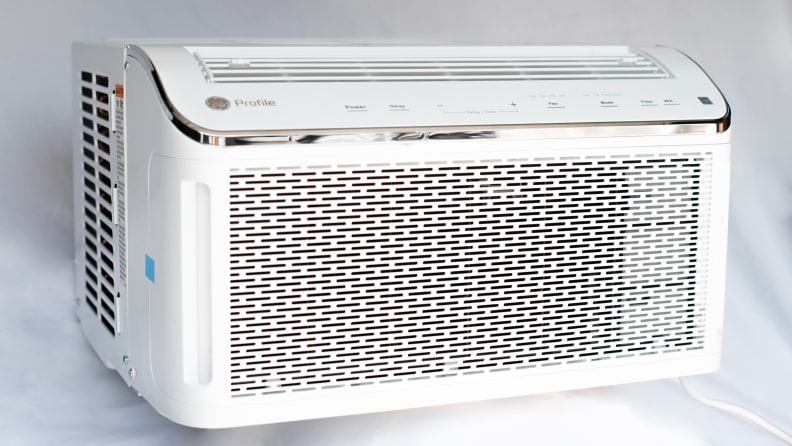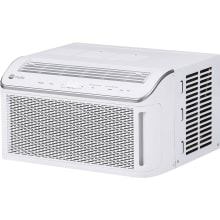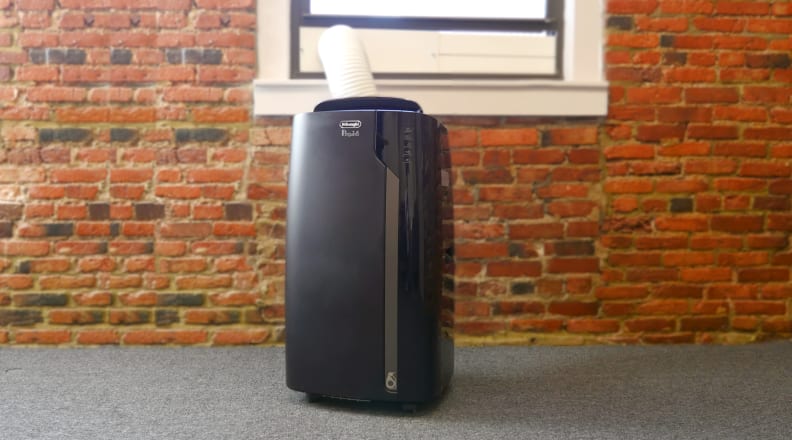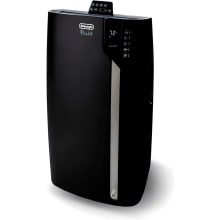PACs vs. window AC units: Which is right for your home?
We break down the pros and cons of portable air conditioners and window units
Products are chosen independently by our editors. Purchases made through our links may earn us a commission.
When it comes to staying cool this summer, there are some better and worse ways to do so, including portable air conditioners, window AC units, and box fans.
While a good fan is the most energy-efficient option for anything under 90°F, once the thermometer rises higher than that, fans actually start to cause additional heat stress and speed up dehydration—yikes! As such, for very high temperatures the only real home cooling option available is air conditioning.
When you pick that new air conditioner, you’ll probably have a few questions. How is a portable air conditioner different than a window AC unit? What are BTUs and DOEs? How do you know you're getting the right air conditioner for a particular room? We'll touch upon all these questions here, but first, let's review the basics.
How do air conditioners work?
In order to suss out which type of air conditioner might be best for you, it's important to know the basics behind how the technology works, in general.
An air conditioner takes in air from around the room and passes it over coils filled with coolant. The coils extract the heat from the air, and then blow the cooler air back into the room. The heat is either exhausted out the back of the device (window units) or through a ventilation tube (portable ACs). This cooling process also produces condensation, which either drips out the back of the device, drains into a reservoir you need to empty, or pushes out a tube you can run to a nearby drain, depending on the type of AC.
How portable air conditioners and window AC units differ
While PACs and window units both use the same technology to cool off a room, their implementation is very different. These differences can often be overlooked. Skimming through AC user reviews, there are always a few one-star testimonials full of details that indicate either that the purchaser bought the wrong AC for their home, or that they expected a new portable AC to behave the same way as their old window unit.
This is like comparing apples to oranges, on the grounds that they're both fruit: While technically correct, you're losing a lot of nuance in the process. Understanding these differences is key to making an informed decision.
Window AC units: the "set it and forget it" powerhouse

Window units can be heavy to lug to a window and difficult to install, but they are efficient at cooling down a room.
Window AC units, like the GE Profile PHC08LY pictured above, typically take the form of a single, heavy box, sometimes with an extendable panel on either side.
A window unit is installed by resting it on a window sill, lowering the window down to trap the air conditioner in place, and locking the window into that position. You can then use its extendable panels (or another solution) to cover up the gaps on either side of the unit between the bottom of the window frame and the sill. Window AC units are often very heavy, which can make them difficult to carry from storage to sill.
Locking the window in its position often requires using some hardware and elbow grease: Using an L-bracket and some screws to secure the window frame to the moulding, for example.
While securing the window shut makes a lot of sense—you don't want an accidental bump to send your AC plummeting to the ground outside—it also means they're a bit of a hassle to install and put away.
You can only install a window air conditioner in a relatively narrow range of windows with the included kit. Many types of windows simply cannot accommodate this type of AC unit or require elaborate DIY setups that may be less safe.
Once a window AC unit is secure, however, it is very efficient. Its form factor ensures its hottest and loudest parts are located outside your home, which often results in less heat recirculating back into your home and a quieter user experience. Condensation can just drip out the back, onto the ground outside.

The GE Profile PHC08LY is the best window air conditioner we’ve tested for its combination of cooling, efficiency, and style.
Portable air conditioners: the easy-install AC unit that can follow you from room to room

We found the De'Longhi PACEX390LVYN Pinguino relatively easy to set up and move from room to room.
Portable air conditioners, like the De’Longhi PACEX390LVYN Pinguino pictured above, are often slightly larger than window units, less boxy, and roll around on casters.
PACs are equipped with a highly efficient heat venting system. The lightweight window kits can be installed in just about any door or window. Even if the window kit doesn't fit flush with your particular door or window, the gap can often be closed with a single piece of plexiglass or cardboard, ensuring a snug fit and effective heat venting.
The window kits are designed for convenience, making installation and removal a breeze. You can easily hook up and disconnect the ventilation hose, allowing you to easily move the PAC unit from room to room, ensuring it's cool wherever you are. At the end of the season, storing the PAC is as simple as easy as wheeling it back into a closet, no heavy lifting or difficult uninstallation required.
Since the main body of a portable air conditioner stays inside the room with you, it has some inefficiencies when compared to window units. PACs need to vent the heat they remove through a hose and out the window.
While most of the heat gets blown outside to disperse, some of it radiates back into the room, either from the device itself or from the sides of its ventilation tube.
This is why it's important to make sure the ventilation tube is as short as possible: The smaller the surface area of the tube, the less heat will be able to recirculate before getting blown outside. Likewise, PACs are often louder than window units, since they're not able to funnel as much of their noise outside.
When it comes to condensation, PACs typically utilize a drip pan, reservoir, or drain hose. Drip pans and reservoirs need to be emptied every so often. Continual-drainage systems typically implement a hose, which you can run to a nearby sink or floor drain.

The De’Longhi PACEX390LVYN Pinguino is more than capable of handling larger spaces.
Choosing the right AC for you
Now that we've gone over the basics of each type of air conditioner, choosing the right one for you should be relatively straightforward. Here's a summary of how the average window unit compares to the average PAC.

Window units make the most sense if:
- You have a compatible window and don't have issues hoisting a 75-lb. box onto a window sill.
- You only need to keep one room cool.
- There's no local ordinance or HOA rules against having one.
Portable air conditioners make the most sense if:
- You don't have a compatible window to install a window unit.
- You want to keep multiple rooms cool at different times throughout the day.
- Installing a window AC is prohibited for some reason.
Additional AC unit info

If you have questions about keeping your home cool, we have the answers.
Now that you know which unit makes the most sense for you, here are some other frequently asked questions about AC units.
What are BTUs? How is that different than DOE?
BTUs, or British Thermal Units, are the standard unit of measurement for the cooling power of an air conditioner: The higher the BTU rating, the faster the unit can cool down a room. A few years ago, the U.S. Department of Energy (DOE) created a revised method for measuring the cooling power of portable ACs. This allows for better apples-to-apples comparisons between window units and portable ACs. If you’re out shopping for portables, you’ll see both numbers.
How many BTUs do I need for my room?
Sometimes just going with the highest BTU unit isn't ideal. Given the size of your room, it could be overkill, and spending extra money on power you don't need isn't the best move if you're on a budget. If you're not sure how much power you need, we'd recommend checking out the Energy Star guidelines for BTUs based on room size.


